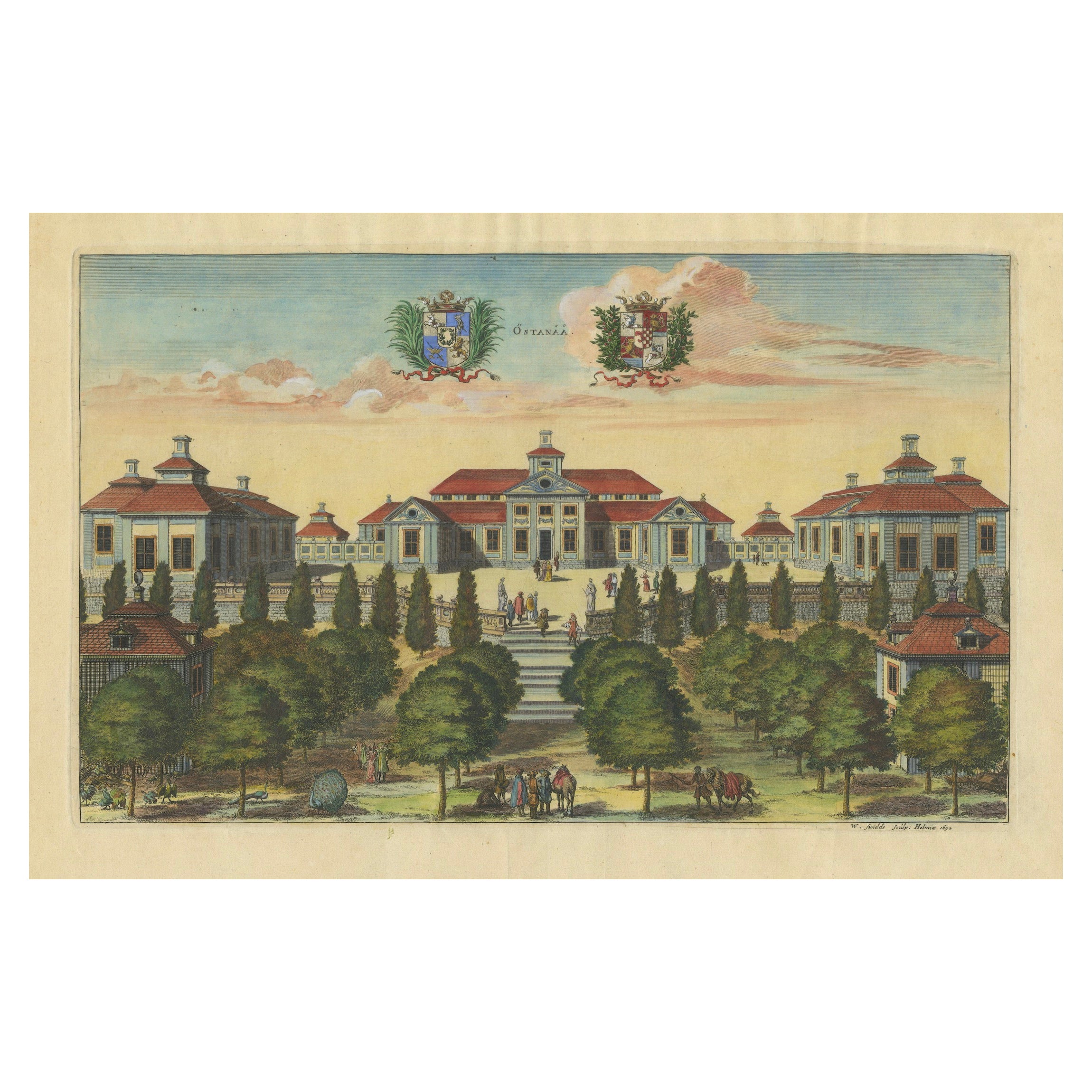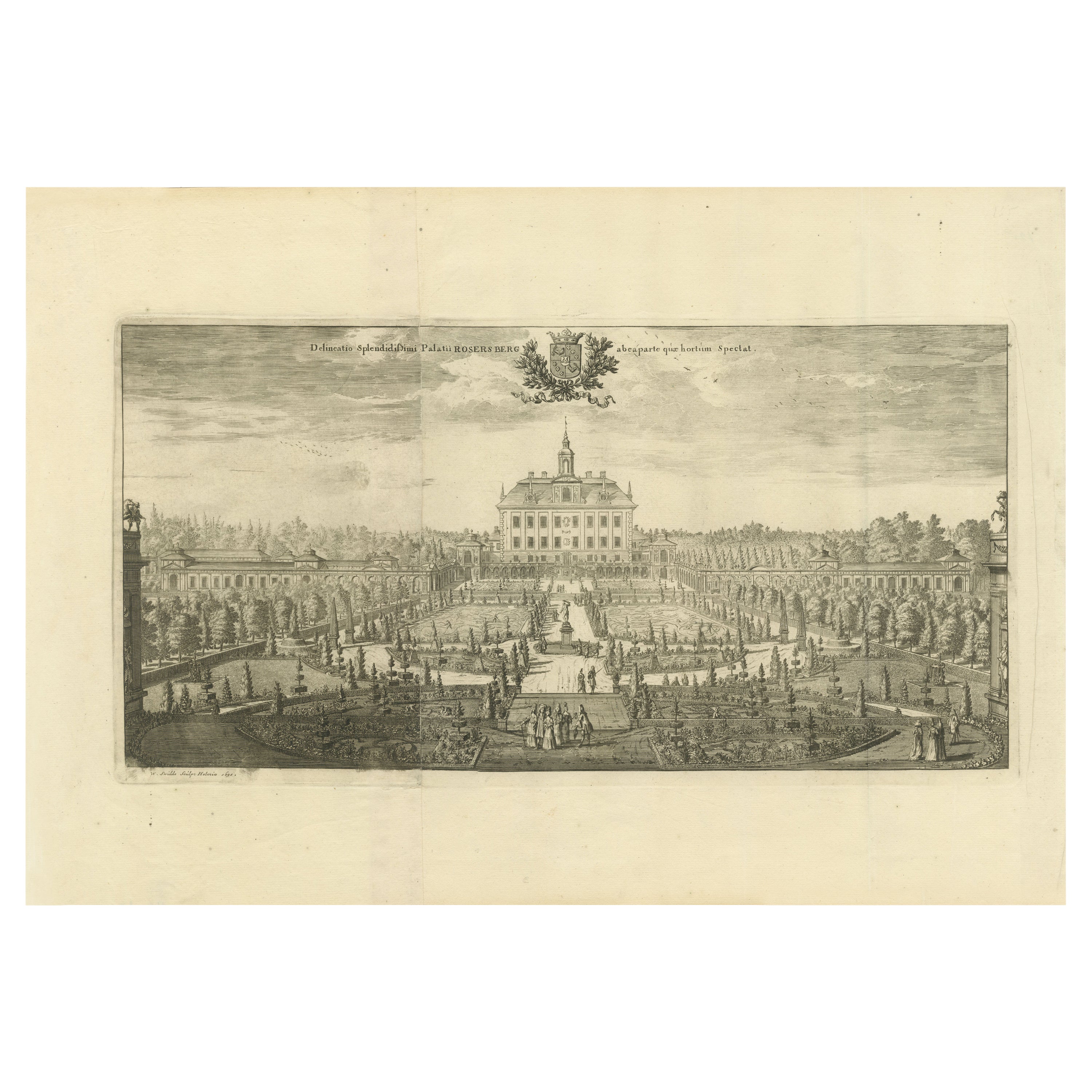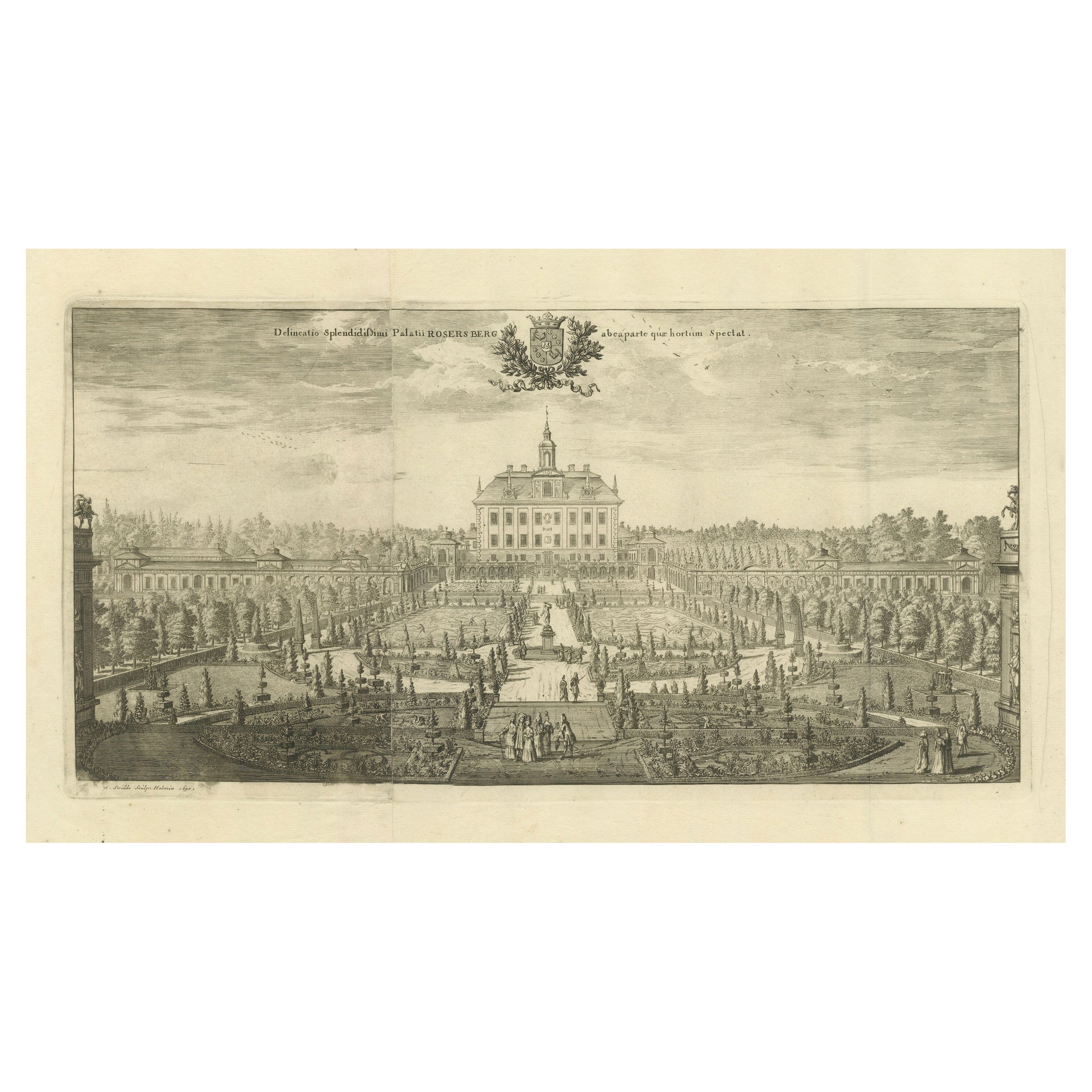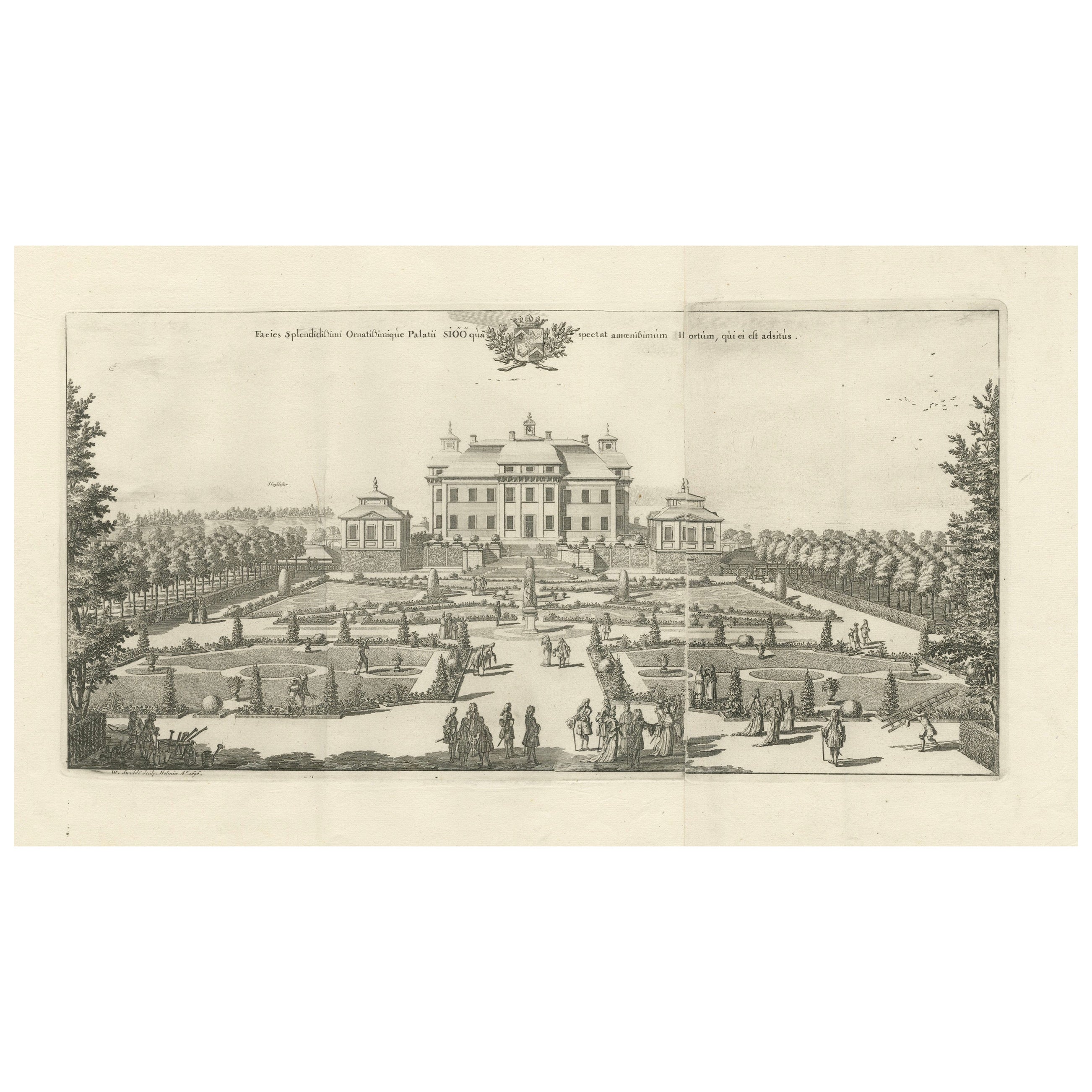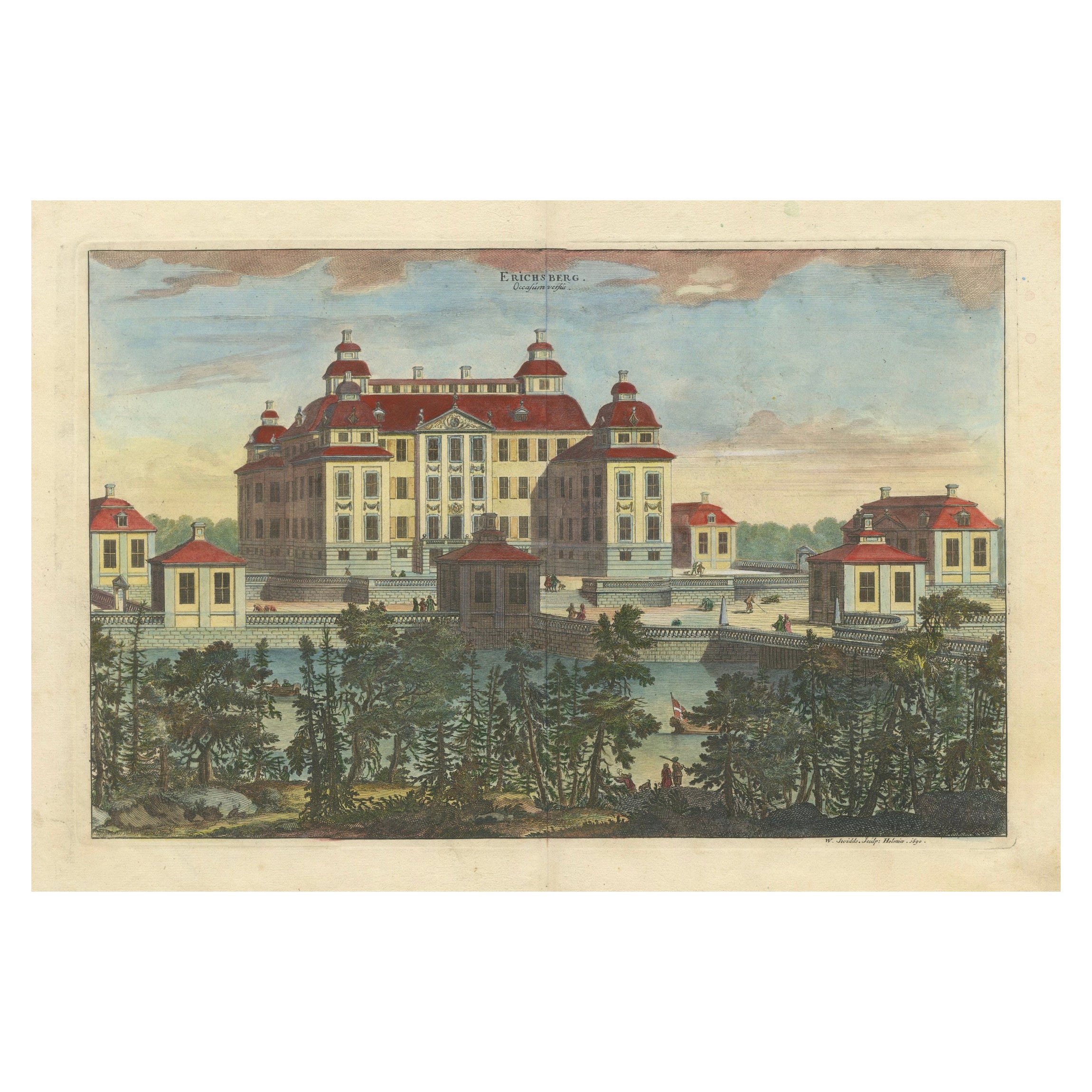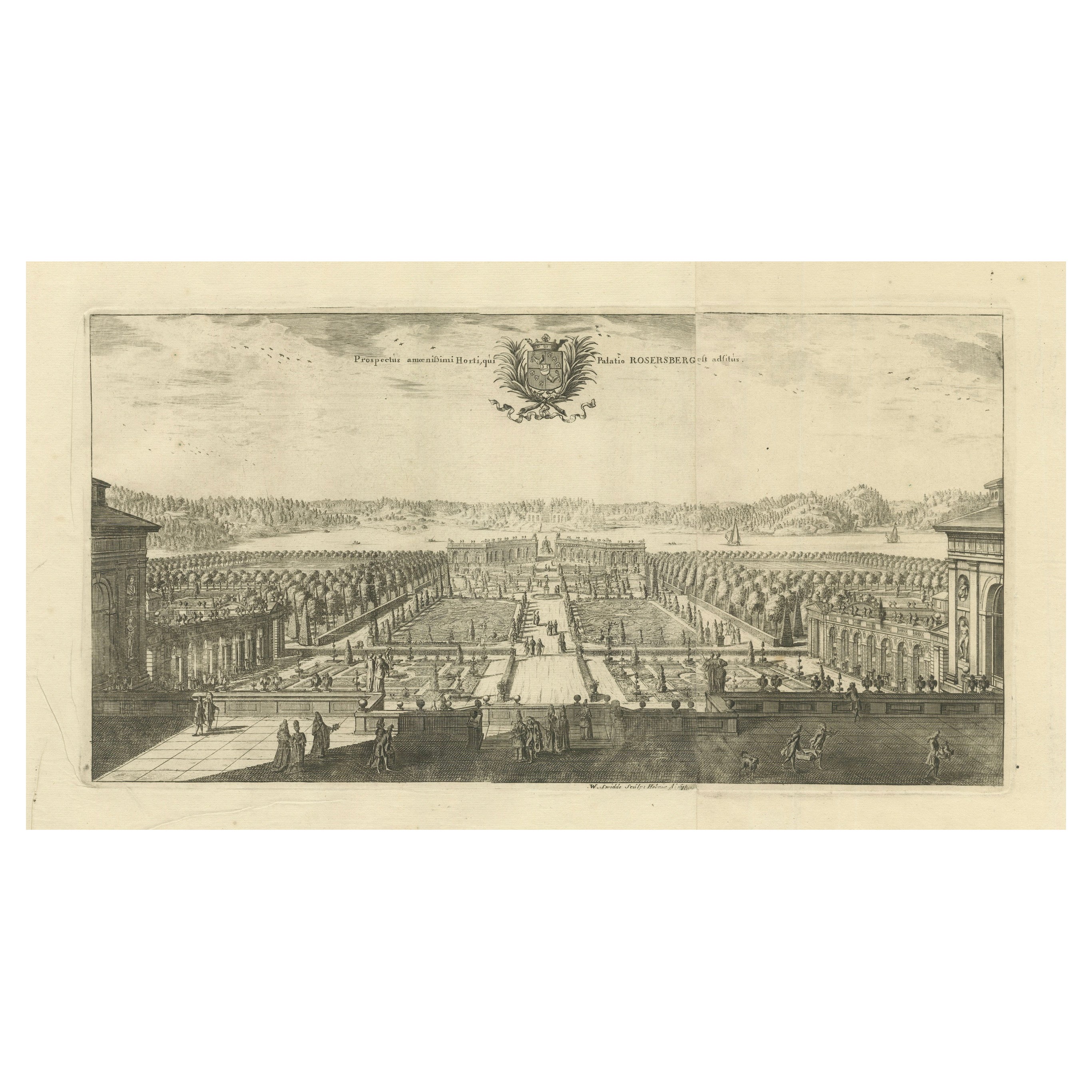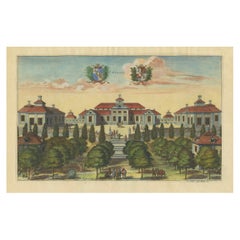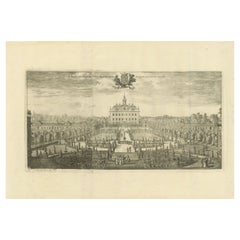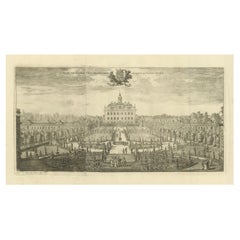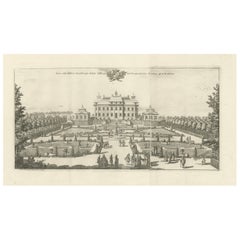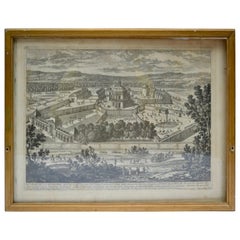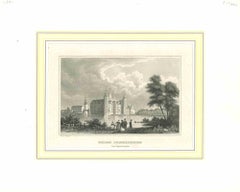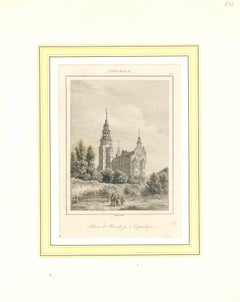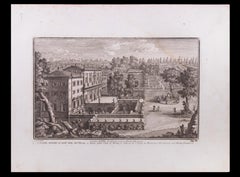Items Similar to Baroque Opulence: The Eastern View of SIQVO Palace in Swidde's 1696 Engraving
Want more images or videos?
Request additional images or videos from the seller
1 of 8
Baroque Opulence: The Eastern View of SIQVO Palace in Swidde's 1696 Engraving
$421.60
$527.0120% Off
£312.43
£390.5420% Off
€352
€44020% Off
CA$575.57
CA$719.4620% Off
A$640.30
A$800.3720% Off
CHF 335.65
CHF 419.5720% Off
MX$7,824.29
MX$9,780.3620% Off
NOK 4,274.11
NOK 5,342.6420% Off
SEK 4,023.49
SEK 5,029.3620% Off
DKK 2,680.10
DKK 3,350.1220% Off
Shipping
Retrieving quote...The 1stDibs Promise:
Authenticity Guarantee,
Money-Back Guarantee,
24-Hour Cancellation
About the Item
An engraving by Willem Swidde from 1696. The print features a palatial estate surrounded by formal gardens, a common representation of baroque architecture and landscaping. The central building is flanked by two symmetrically placed wings, with a grand staircase leading to the entrance. This setup is typical for the period, emphasizing order, symmetry, and control over nature, which was a hallmark of the baroque era.
The text above the print is in Latin: "Delineatio magnifici pudererumque Palatii SIQVO qua Orientem spectat." This can be translated to "Representation of the magnificent and elegant Palace of SIQVO as seen from the East."
More about the castle:
The engraving is of Sjö (historically spelled as Ekolsund) Castle, which is situated in the tiny parish of Holm in the municipality of Enköping, Uppland, Sweden. The castle as depicted in the engraving, created by Willem Swidde in 1696, features the grand architecture and formal gardens that were typical of the Baroque period in Swedish history.
The castle has medieval origins and has been through various phases of construction and ownership throughout the centuries. In 1409, it was taken over by Peter Laurensson, and in 1541, it was bought by King Gustav Vasa. The present castle structure was built during the ownership of Johan Gabriel Stenbock and designed by the architects Nicodemus Tessin the Elder and Mathias Spieler. The castle and its park have been considered some of the most beautiful in Sweden, noted for their perfect and harmonious proportions.
Currently, Sjöö Castle is a part of Sweden's cultural heritage and is maintained as a historical site. The park and the castle's exterior are often accessible to the public, but the interior may be private or used for specific events. It remains a testament to the rich architectural and cultural history of Sweden.
More about the artist:
Willem Swidde was a Dutch draughtsman and engraver who made a significant contribution to Swedish topographical and historical illustration in the late 17th century. Born around 1660 in Amsterdam, Swidde's journey as an artist eventually led him to Sweden.
In 1688, he was brought to Stockholm by Count Erik Dahlbergh, a Swedish engineer, soldier, and field marshal, who recognized Swidde's talent and needed his skills for the illustration of various works. Swidde's initial task in Sweden was to produce illustrations for Samuel Pufendorf's history of Charles X Gustav of Sweden. He successfully created 18 plates out of the 123 for this work.
However, Swidde's most notable and enduring work was for the ambitious "Suecia Antiqua et Hodierna" (Ancient and Modern Sweden), a project that aimed to document and celebrate Sweden's grandeur through elaborate topographical engravings. In this venture, Swidde was instrumental, contributing 76 of the book's plates. His engravings were based on drawings by Dahlbergh, with whom he collaborated closely, often enhancing the original designs to better capture the magnificence of the Swedish landscapes and architecture.
Swidde's work is characterized by its meticulous detail and the way it captures the baroque splendor of the Swedish empire. Despite the grand scale of his work, Swidde's life remains sparsely documented, and he passed away in Stockholm in 1697, leaving behind a legacy through the plates that continue to be appreciated for their historical and artistic value. His contributions to "Suecia Antiqua et Hodierna" helped immortalize the Sweden of his era, reflecting both the country's natural beauty and its cultural aspirations.
- Dimensions:Height: 13.19 in (33.5 cm)Width: 19.97 in (50.7 cm)Depth: 0 in (0.02 mm)
- Materials and Techniques:Paper,Engraved
- Period:1690-1699
- Date of Manufacture:1696
- Condition:Good. Two plates joined with the vertical lines visible. A light brownish hue and minor foxing adds patina to this original engraving. Wide margins. Please study the images carefully.
- Seller Location:Langweer, NL
- Reference Number:Seller: Bg-13670-261stDibs: LU3054338109942
About the Seller
5.0
Recognized Seller
These prestigious sellers are industry leaders and represent the highest echelon for item quality and design.
Platinum Seller
Premium sellers with a 4.7+ rating and 24-hour response times
Established in 2009
1stDibs seller since 2017
2,494 sales on 1stDibs
Typical response time: 1 hour
- ShippingRetrieving quote...Shipping from: Langweer, Netherlands
- Return Policy
Authenticity Guarantee
In the unlikely event there’s an issue with an item’s authenticity, contact us within 1 year for a full refund. DetailsMoney-Back Guarantee
If your item is not as described, is damaged in transit, or does not arrive, contact us within 7 days for a full refund. Details24-Hour Cancellation
You have a 24-hour grace period in which to reconsider your purchase, with no questions asked.Vetted Professional Sellers
Our world-class sellers must adhere to strict standards for service and quality, maintaining the integrity of our listings.Price-Match Guarantee
If you find that a seller listed the same item for a lower price elsewhere, we’ll match it.Trusted Global Delivery
Our best-in-class carrier network provides specialized shipping options worldwide, including custom delivery.More From This Seller
View AllBaroque Splendor: The Östanå Manor in Gränna, 1692 Swidde Engraving
Located in Langweer, NL
An original copper engraving from the renowned "Suecia Antiqua et Hodierna," an atlas of Sweden created under the direction of Erik Dahlberg in the late 17th century. This particular engraving, crafted by Willem Swidde in 1692, depicts the Östanå herrgård (manor house) in Gränna, located in the Jönköping county of Småland.
The engraving showcases the manor in a stately fashion, with a classical architectural design featuring symmetrical wings and a central structure adorned with a grand staircase. The scene is animated with figures in the foreground, indicating the manor's role as a hub of activity and societal life. The garden layout...
Category
Antique Late 17th Century Prints
Materials
Paper
$498 Sale Price
20% Off
Free Shipping
Baroque Grandeur: The Rosersberg Palace Gardens in Swidde's 1695 Engraving
Located in Langweer, NL
The image is an original antique copperplate engraving by Swidde, completed in 1695. The scene is a meticulous depiction of an elegant palace and its formal gardens, rendered in the ...
Category
Antique 1690s Prints
Materials
Paper
$431 Sale Price
20% Off
Free Shipping
The Ekolsund Castle and Gardens in Sweden in Swidde's 1695 Engraving
Located in Langweer, NL
The print is aan original detailed 1695 engraving of Ekolsund Castle in Sweden, crafted by Willem Swidde. The engraving is part of the collection from "Suecia Antiqua et Hodierna," which was a grand work showcasing the estates and landmarks of Sweden through elaborate illustrations.
The scene depicted in the engraving is a classic example of the baroque garden architecture style, with geometrically arranged gardens, symmetrical layouts, and an expansive approach leading up to the castle, emphasizing the grandeur and formality of the estate. The meticulous detail in the gardens and the inclusion of figures within the grounds suggest a vibrant and cultured estate life.
Ekolsund Castle, located in Enköping Municipality in Uppsala County, Sweden, is a manor house with a rich history dating back to the 14th century. By the 15th century, it was owned by the prominent Bengt Jönsson...
Category
Antique 1690s Prints
Materials
Paper
$364 Sale Price
20% Off
Free Shipping
The Sjö Castle and Gardens in the Swedish Countryside, 1696
Located in Langweer, NL
The engraving depicts a grand manor house surrounded by formal gardens. It is titled "Facies Splendidissimi Ornatißimique Palatii," which suggests it is an illustration of an opulent and ornate palace. The year noted for the engraving is 1696, and it was engraved by Swidde, referring to Willem Swidde, a Dutch artist known for his work in Sweden and his significant contributions to the collection "Suecia Antiqua et Hodierna" by Erik Dahlbergh...
Category
Antique 1690s Prints
Materials
Paper
Baroque Splendor: Ericsberg Castle in Swidde's Suecia Antiqua et Hodierna, 1690
Located in Langweer, NL
The engraving depicts Ericsberg Castle (Erichsberg), a baroque castle located in Södermanland, Sweden. This hand-colored print is from "Suecia Antiqua et Hodierna" (Ancient and Moder...
Category
Antique 1690s Prints
Materials
Paper
$459 Sale Price
20% Off
Free Shipping
Rosersberg Palace and Gardens near Stockholm in the Baroque Splendor of 1695
Located in Langweer, NL
This is a historical etching from "Suecia Antiqua et Hodierna", which translates to "Ancient and Modern Sweden", a large work that includes a collection of engravings...
Category
Antique 1690s Prints
Materials
Paper
$172 Sale Price
20% Off
Free Shipping
You May Also Like
18 Century Engraving of the Royal Menagerie at Versailles by Antoine Aveline
By Antoine Aveline
Located in Vancouver, British Columbia
A rare 18 century perspective view engraving of the Salon de la Menagerie at Versailles, attributed to Antoine Aveline retailed in Paris by Nicolas Langlois and executed with the per...
Category
Antique Early 18th Century French Louis XV Drawings
Materials
Paper
$440 Sale Price
20% Off
Ancient View of Schloss Friederichsburg - Lithograph on Paper - Early 1800
Located in Roma, IT
Ancient View of Schloss Friederichsburg is an original modern artwork realized in the first half of the 19th Century.
Original Lithograph on Ivory Paper.
Inscripted on the lower ...
Category
Early 19th Century Modern Figurative Prints
Materials
Lithograph
Ancient View of Palais de Rosenberg - Lithograph on Paper - Early 19th Century
Located in Roma, IT
Ancient View of Palais de Rosenberg is an original modern artwork realized in Italy in the first half of the 19th Century.
Original Lithograph on Ivory Paper.
Inscripted on the l...
Category
Early 19th Century Modern Figurative Prints
Materials
Lithograph
Casino di Villa Lodovisi - Etching by Giuseppe Vasi - 18th Century
By Giuseppe Vasi
Located in Roma, IT
Casino di Villa Lodovisi presso Porta Pinciana is an original etching of the Late 18th century realized by Giuseppe Vasi.
Signed and titled on plate lower margin.
Good conditions ...
Category
Late 18th Century Old Masters Landscape Prints
Materials
Etching
Palazzo Borghese - Etching by Giuseppe Vasi - 1747
By Giuseppe Vasi
Located in Roma, IT
Palazzo Borghese is original black and white etching realized by Giuseppe Vasi .
Beautiful etching representing Palazzo Borghese in Rome.
Signed and...
Category
Mid-18th Century Old Masters Figurative Prints
Materials
Etching
Ancient View of Kloster Braunau - Original Lithograph - First Half 19th Century
Located in Roma, IT
Kloster Braunau is an original modern artwork realized in the first half of the 19th Century.
Original B/W Lithograph on Ivory Paper.
Inscripted on the lower margin in Capital Let...
Category
Early 19th Century Old Masters Figurative Prints
Materials
Lithograph
More Ways To Browse
Chest Of Drawers With Pull Out Desk
Chinese Altar Vase
Chinese Carved Celadon Jade
Chinese Cloisonne Plate
Chinese Dragon Embroidered
Chinese Emperor Empress
Chinese Enamel Teapot
Chinese Frog
Chinese Ink Box
Chinese Table With Mother Of Pearl Inlay
Chinoiserie Fans
Chippendale Locked Cabinet
Clay Water Jug
Coiled Rattan
Column Indonesia
Concrete Garden Animals
Copper Buddha
Danish Teak Secretary Desk
